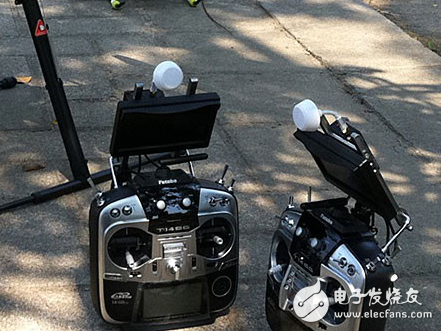How do the drones in the sky and the operators on the ground "communicate"? The answer is the remote control system and image transmission system (referred to as the picture transmission). The remote control is responsible for conveying the operator's instructions to the drone, and the image transmission transmits the camera's view screen, flight data and the like to the operator's screen. Both systems are transmitted using radios of different frequencies. Such human-computer interaction enables the drone to operate beyond the operator's line of sight (beyond the visual range).

Common UAV remote control, mainly from the remote control model of the remote control system, usually uses the 2.4G frequency signal for the transmission of operational commands. In a drone, it can be divided into two sets of remote control: "flying hand" and "cloud hand". The former mainly performs operations on drone flight, while the latter mainly performs operations on aerial photography. Of course, the two can be combined into one, and it is enough to deal with simple lenses.

In many aerial drones, such a transmitter with a "mushroom antenna" can usually be seen. This is the transmitting device of the image transmission system, which usually transmits the image to the ground using a signal of 5.8G frequency. In addition, there will be different signal frequency bands such as 1.2G and 2.4G. However, the 1.2G image transmission will affect the GPS signal, and the 2.4G image transmission will affect the 2.4G remote control signal. Therefore, the 5.8G image transmission is more popular.

At the ground end, the receiver receives the signal and transmits it to the screen, so that the picture in the sky can be seen on the ground for framing shooting and monitoring of flight data.
Three-axis Micro DSLR Stabilizer
Three-axis micro DSLR stabilizer is composed of pan axis, rolling axis and tilt-axis. With a gyro-stabilized gimbal system, it keeps stabilized or steerable horizon with automatic calibration to give you an unprecedented smooth shooting experience.

Wewow focusing on handheld stabilizer is a technology company which does R & D independently. With Wenpod series product released, the company achieved the industry's praise and quickly became the leader of the smart stabilizer industry.
Our service
1. Reply to you within 24 hours.
2. Already sample: within 1-2days.
3. Shipping date: within 24 hours once get the payment.
4. 12 months warranty.
5. After-sales service, solve within 3 working dates.
Wewow appreciates domestic and international business relationship!
Three-Axis Micro DSLR Stabilizer,Popular Three-Axis Micro DSLR Stabilizer,Professional Three-Axis Micro DSLR Stabilizer,Handheld Three-Axis Micro DSLR Stabilizer
GUANGZHOU WEWOW ELECTRONIC CO., LTD. , https://www.stabilizers.pl